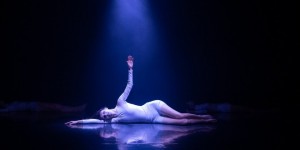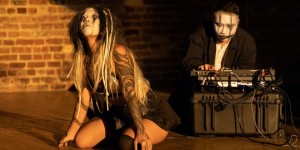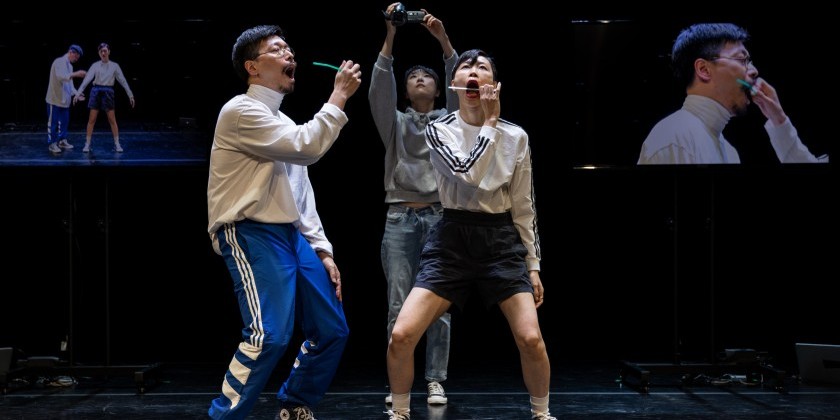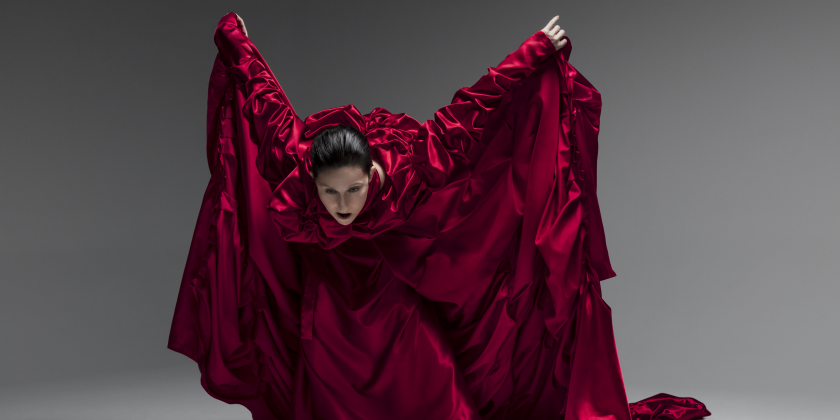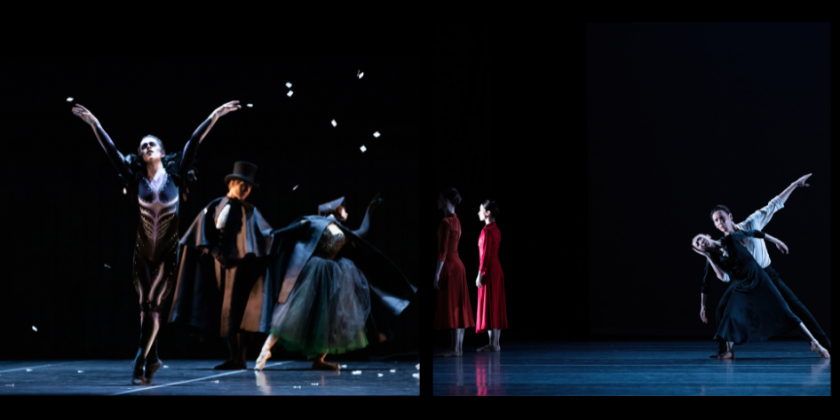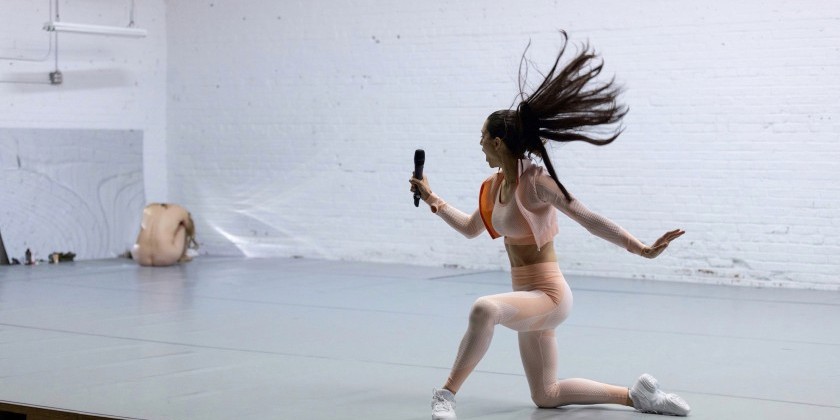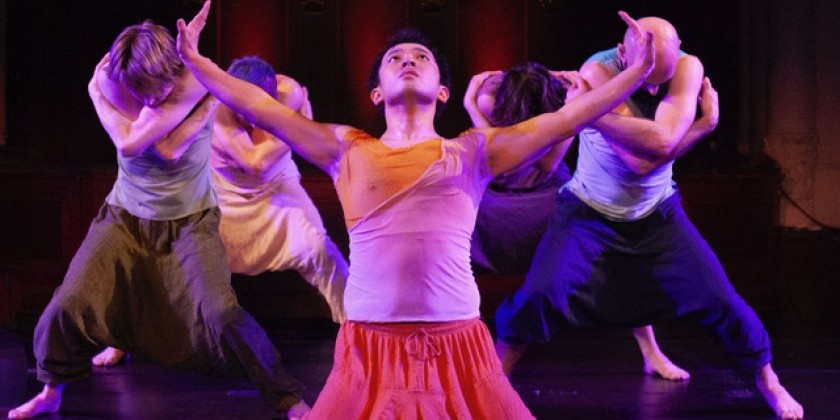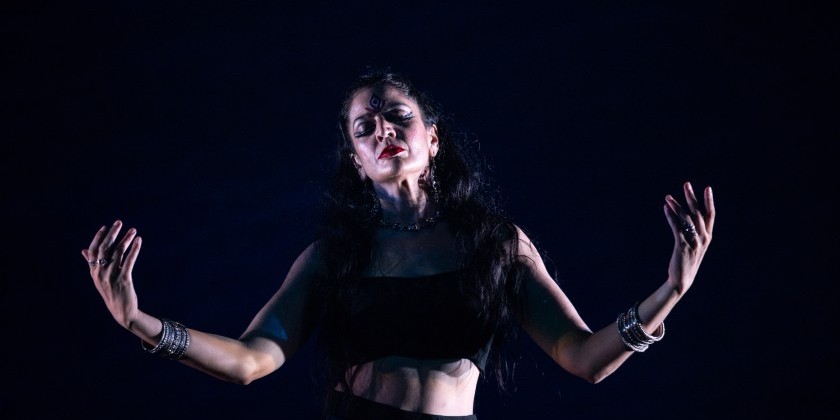IMPRESSIONS: Sankai Juku in "KŌSA, Between Two Mirrors" at The Joyce Theater
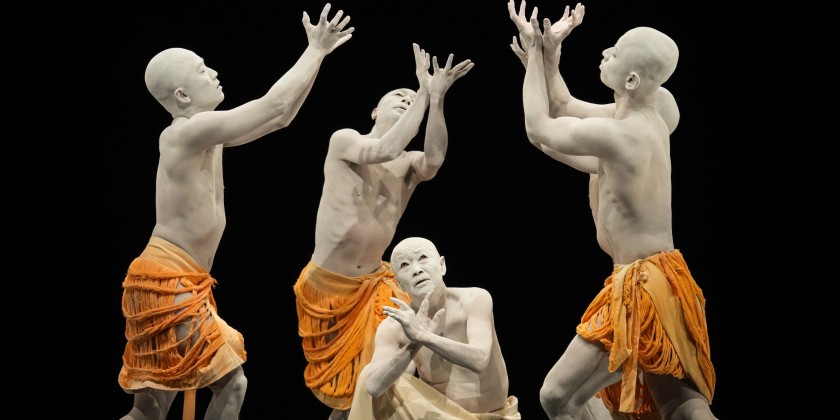
Reimagined Excerpts from Vast Repertoire Combine to Create Thought-Provoking Homage To Legacy of Japanese Dance Theater
Artistic Director, Choreographer and Designer: Ushio Amagatsu
Assistant Director: Semimaru
Music: YAS-KAZ, Yoichir Yoshikawa
Dancers: Akihito Ichihara, Norihito Ishii, Sotaro Ito, Taiki Iwamoto, Dai Matsuoka, Makoto Takese, Sho Takeuchi
Lighting Designer: Genta Iwamura
Sankai Juku, the Japanese Butoh group founded in 1975 by Ushio Amagatsu, made its New York City debut in 1984 at City Center. That thrilling performance put me on the edge of my seat. Amagatsu, resembling a squirming larva in one solo, hung upside down in a red triangle.
KŌSA, between two mirrors, the company’s recent 90-minute offering at The Joyce Theater, is entrancing, too. An assemblage of scenes from several dances portrays human existence in its frailties, vices, and turmoil. From its inception, the company has remained committed to themes of distress and ‘otherness’. KŌSA explores the satisfaction of harming, the love of self, cross dressing, and death.

Bodies painted white, intensely focused, and moving with measured slowness, the company of seven male performers primarily keep their feet on the ground. When in a group, they move in unison except for brief improvisations. A few sprightly jumps from two feet, with a leg tossed behind, adds levity to a concentrated and formal vocabulary. Each member of this mesmerizing intergenerational company commands the stage.

Four dancers enter a darkened stage costumed in orange sarongs and bare chested, they gather in a central, black lozenge to speak in a private hand language. An older dancer, Sho Takeuchi in yellow sarong, appears in a circle of sand. The others rush to crowd around him. Powder disperses in a cloud as his hands flap, and he rises. The strains of a stringed instrument, and the tinkle of bells accompany the supporters, their fingers fluttering over the collapsing man. Arms snaking up their torsos, they escort Takeuchi, an everyman, his palms facing outward, down a brightly lit corridor toward his presumed death.
Dai Matsuoka steps onto the sand circle. This man, unlike Takeuchi, exudes strength and willfulness. With deliberation, he looks down and over his shoulder before reaching upward, fingers rippling to piano chords. A little hop, and he grapevines across the space. Rushing to the sand circle, he retreats openmouthed, splayed fingers covering his face when four dancers costumed in long, black Victorian-like dresses enter.
.jpg)
The dancers in black offer sultry smiles while suggestively lifting their skirts to reveal whitened legs. To a steady, strong beat, they slice their own faces or the faces of their companions, red appearing along the wound, as they silently chortle. Scurrying with cartoonish wheeling steps from end to end, they laugh, they cry, and the light darkens.
The unhurried Akihito Ichihara stands tall in the sand circle, an orange ornament adorning the side of his face. He carves the space as he strides, his lengthy solo the central, gathering force of the dance. One finger traces the inside of an extended arm. Ichihara’s movement recalls the influence on Butoh of the early modern dancers, Mary Wigman and Isadora Duncan; Wigman’s expressionism, seen in twisted and angular movement, and Duncan’s grounded lower body, the torso and arms light and extending.

A smaller man, Norihito Ishii, dancing in yellow concentric circles of light, reaches slowly with gnarled fingers while bending his elbows. His hand shoots out before both hands fold one over the other and rest on his chest. Mouth open, his body shudders as if weeping.
All seven dance in the final scene to big rolling sounds and booms of thunder. In comparison to the other sections, the stage is bright, and lit by a yellow background. On different timings, the arms and legs of four dancers reach out. They sway together, spiraling to the floor and rising again. On center stage, they fall to their backs with legs in the air, while the other three, still and silhouetted, look on.






